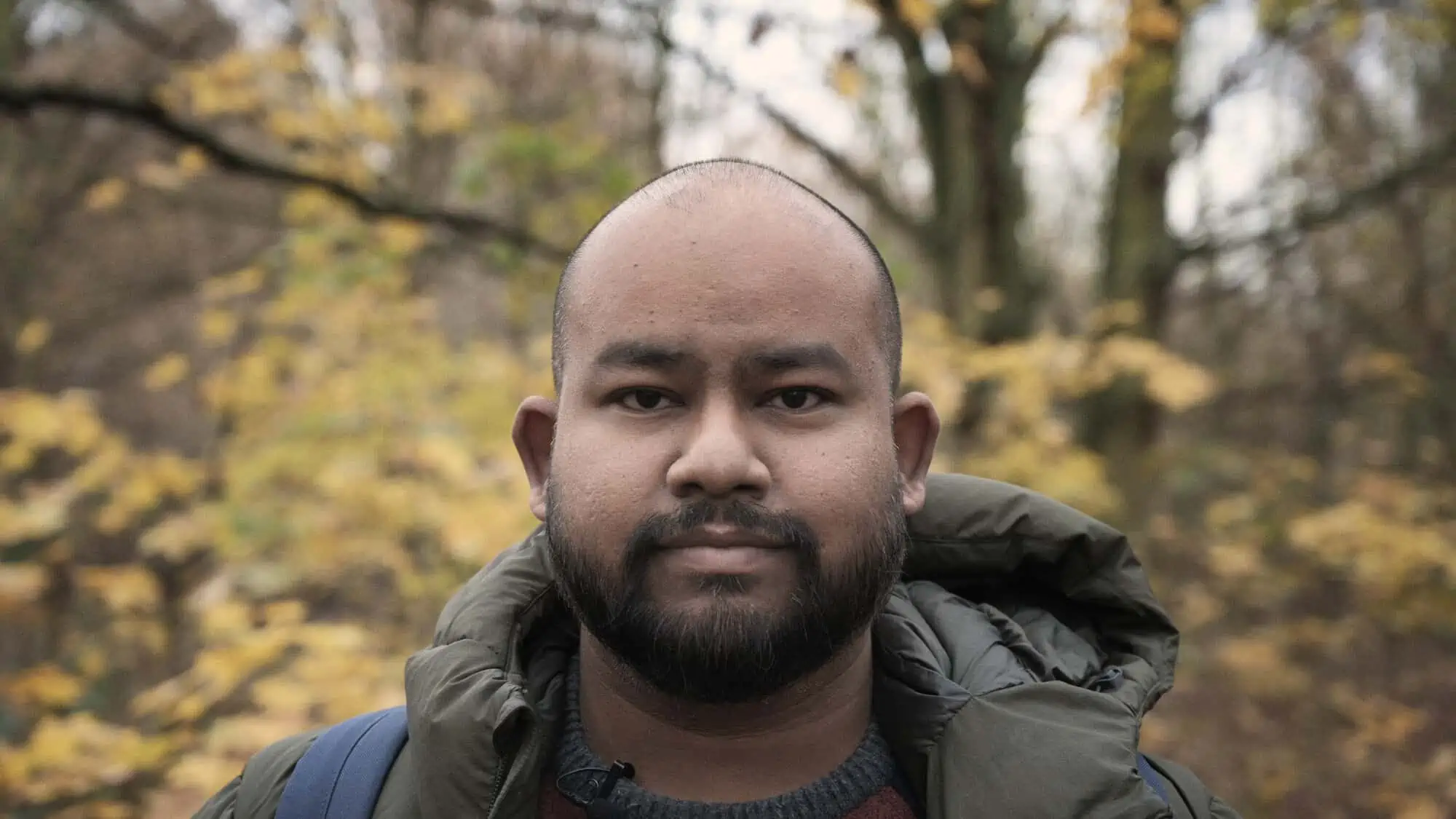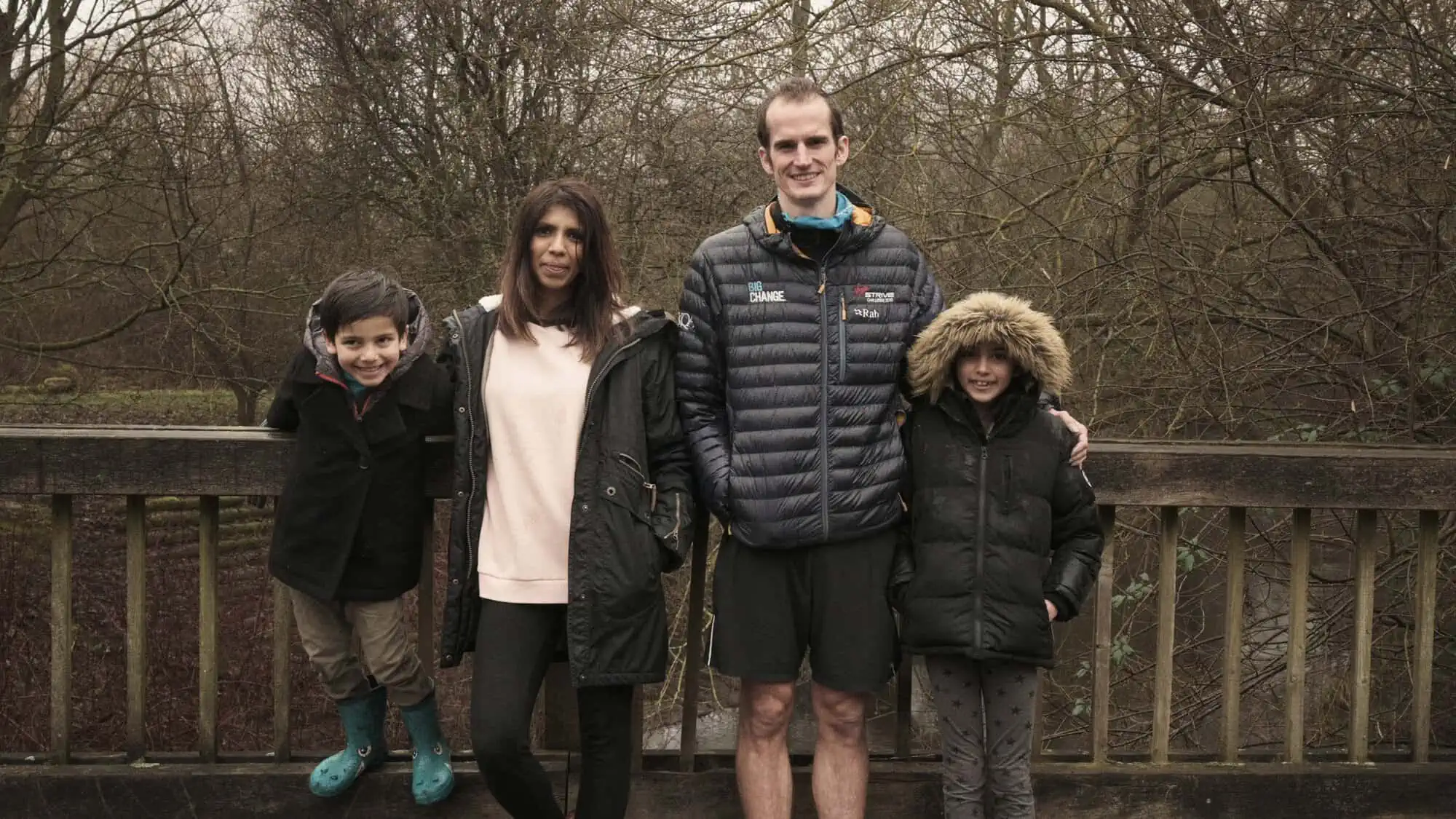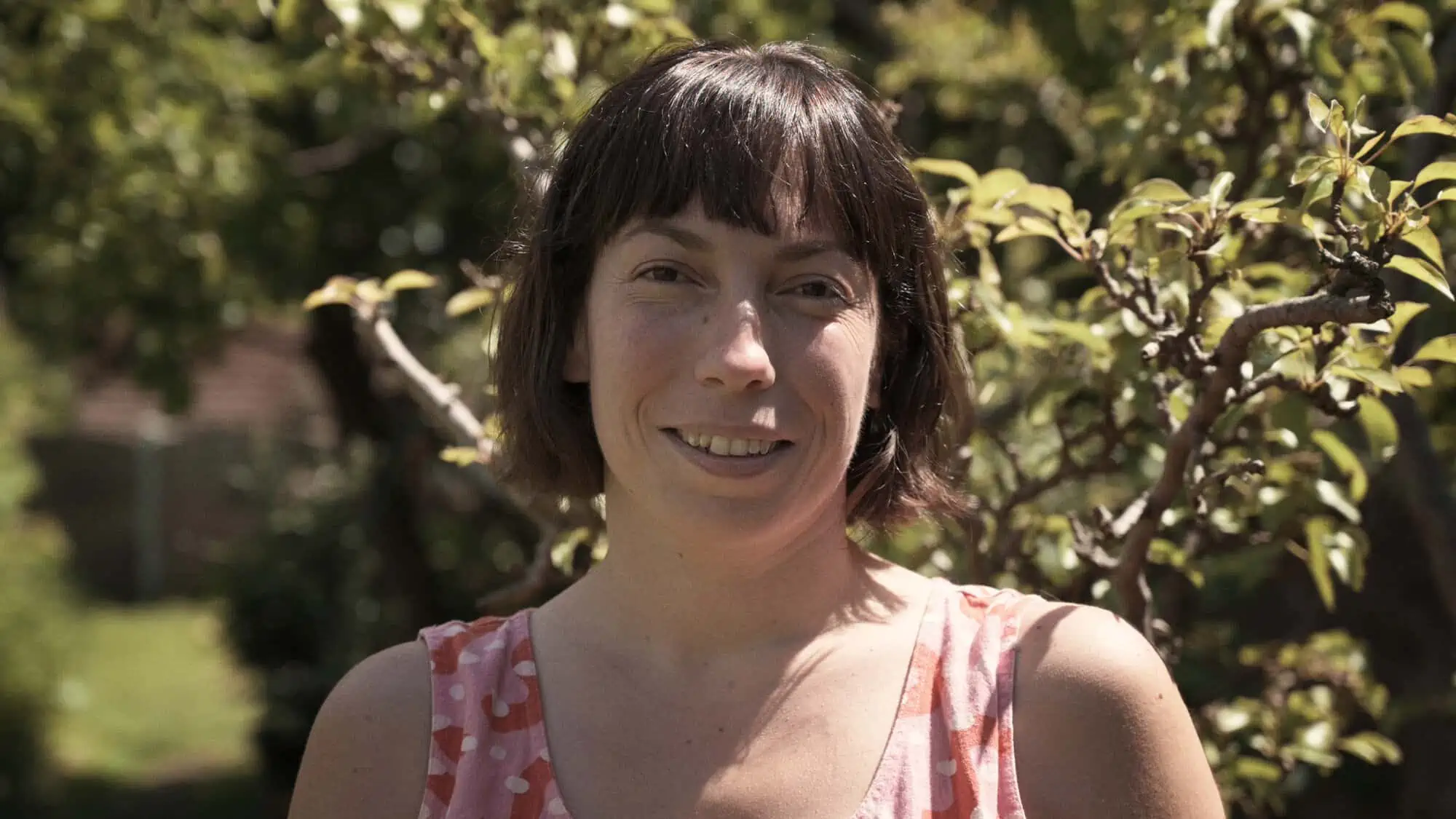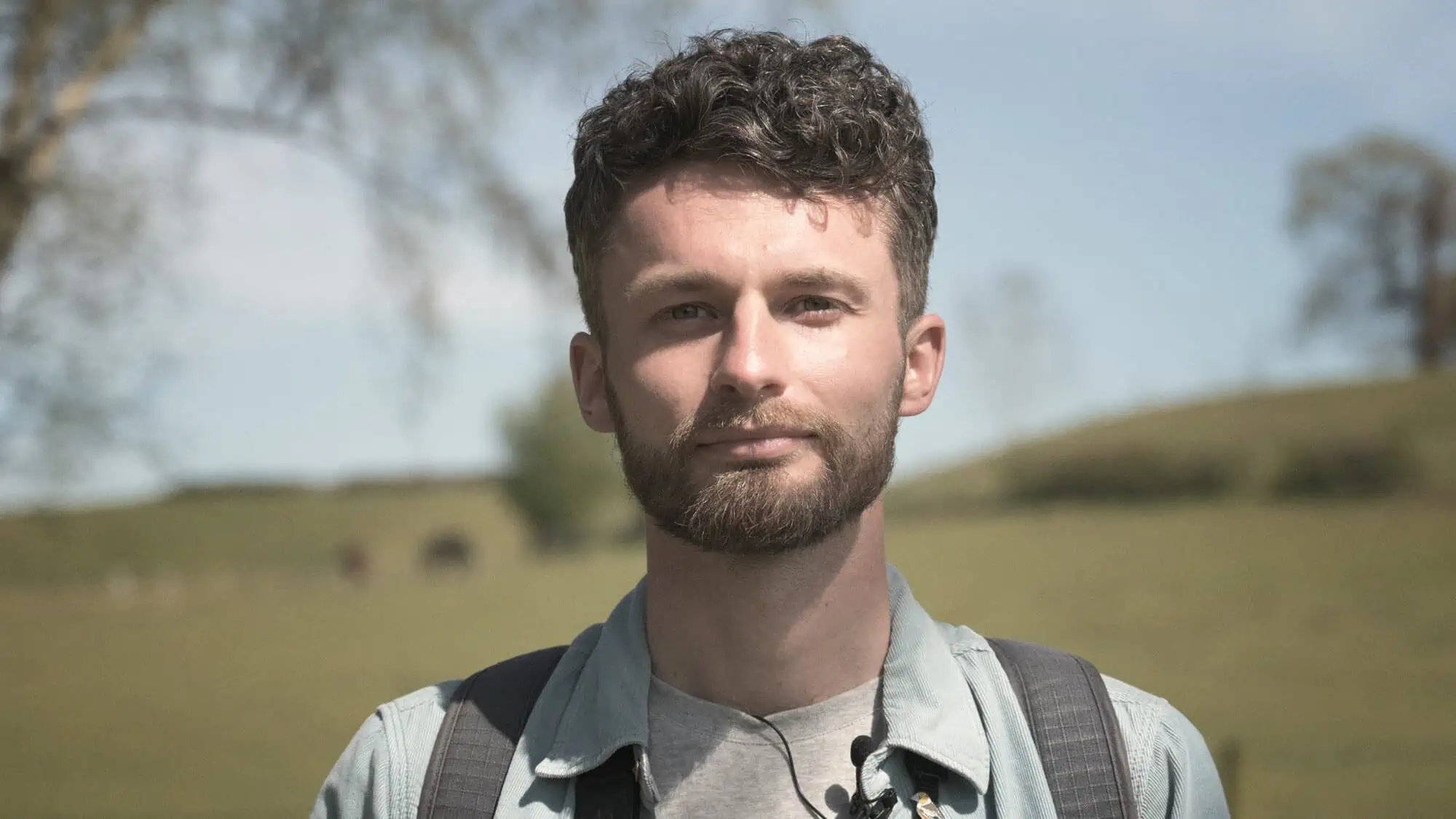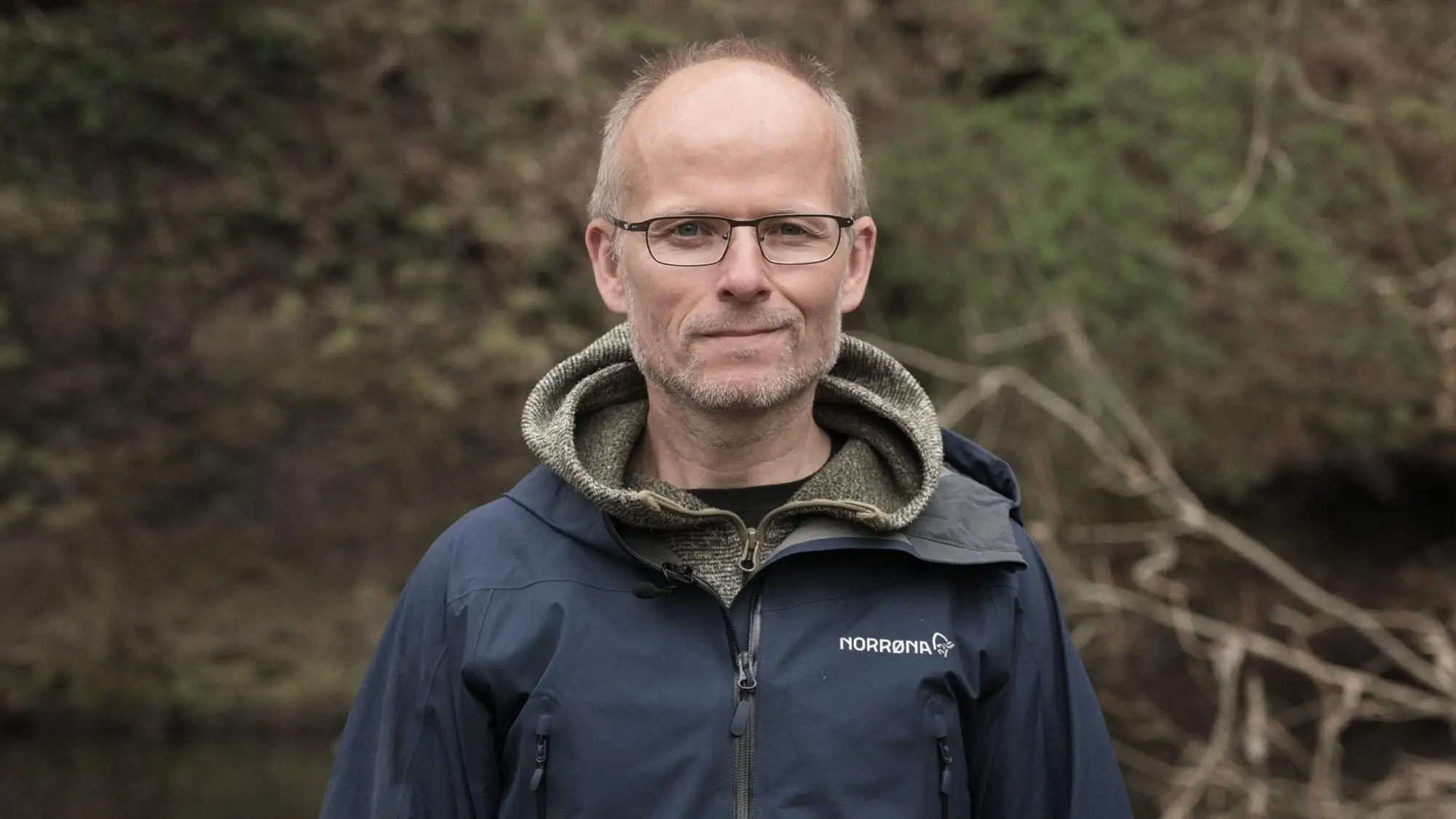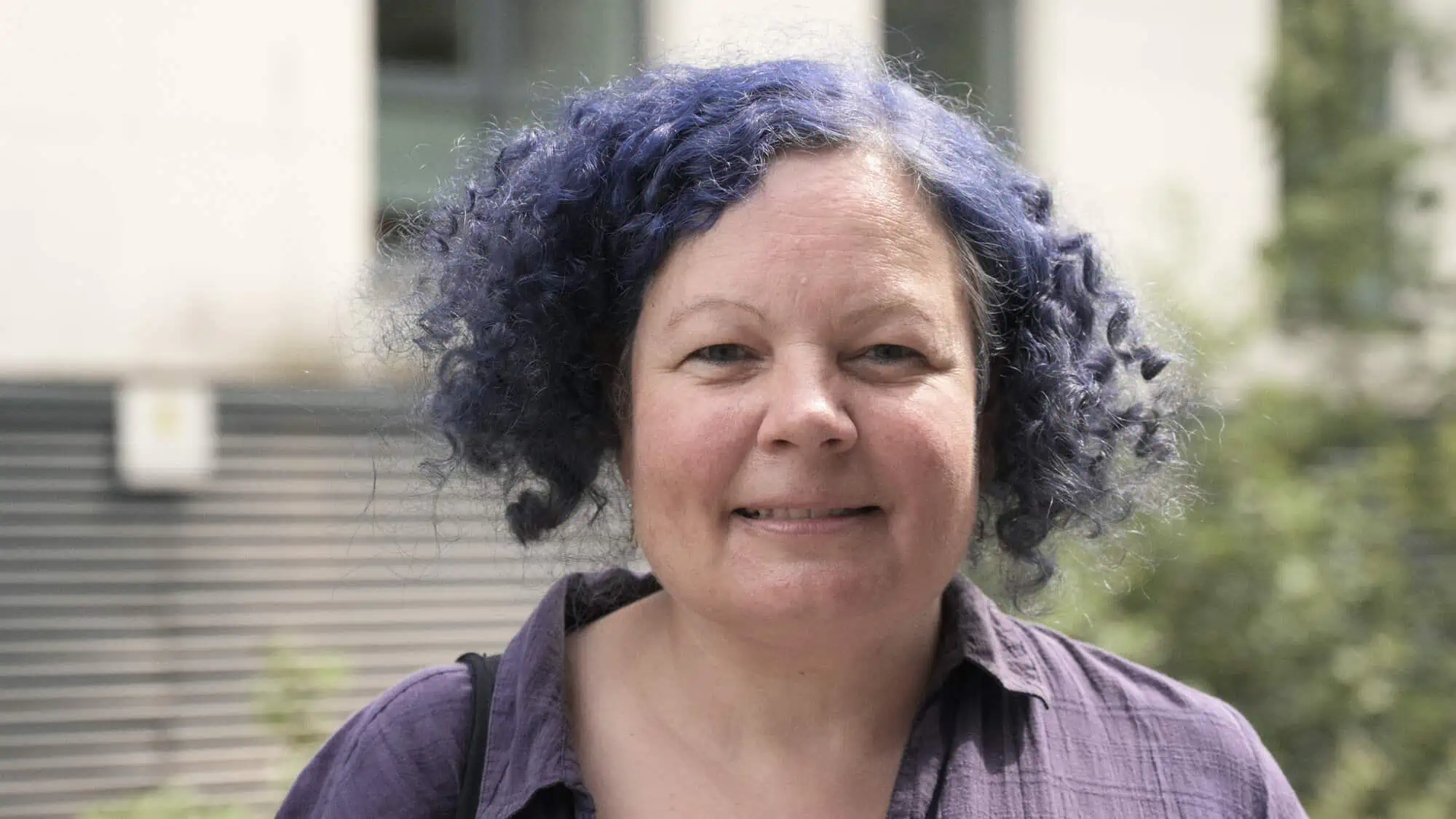Over the past eight months or so, we’ve been working on our latest film project. As I write, we’re in post-production and still undecided on a final title for the project. The film explores a range of people’s relationships with their local outdoor spaces and how this has developed or changed as a result of the Coronavirus lockdown. We’re looking forward to presenting the finished film soon, but, in the meantime, we wanted to write about some of the wider issues – specifically the issue of conservation of these sometimes very unlovely spaces – that came up during the production.
Image Description: A landscape format image. A head and shoulders portrait of Robi Choudhury in front of an out of focus background of trees.
During the pandemic we’ve collectively faced many hardships and restriction of freedoms that many of us had previously taken for granted and, chief amongst these was a restriction on freedom of movement. For us, this was a massive deal. Much of our work hinged around travel, whether that was international or domestically in the UK. Beyond this, we were used to living an active life and most weeks would involve at least one long drive to head somewhere for a walk or hike. The lockdown brought all of this to a sudden stand-still and to say this impacted us is a huge understatement. All of a sudden, many of the constants, the regular patterns that form our lives, were upended (and yes, travelling to different places on short notice, even though it may seem by definition to be irregular and random, somehow managed to become part of our routine).
Image Description: A landscape format image. The Burton family stand on a bridge in front of an out of focus background of trees.
With stay at home, and then stay local orders in place, we had a moment of reckoning: Unless we wanted to withdraw from the outdoors completely, we had no choice but to engage with our local spaces. Local spaces that we’d previously overlooked – in fact, actively ignored – in favour of more ‘exciting’ or ‘exotic’ destination. For us, this turned out to be a massively positive experience that helped us in considerable ways to come to terms with and even to overcome some new hardships we faced due to the pandemic. We created a short film about this experience: The Spaces In-Between.
Producing The Spaces In-Between was certainly a cathartic act for Fay and I. It helped us to gain some valuable perspective on the events that had so quickly changed everything in our lives. But the process also gave rise to a number of new questions that we could not answer ourselves through the work we had created. It was clear from things that were being said amongst our friends, in online social media communities and even in the news that time spend outdoors was becoming increasingly important to many people during the pandemic, but aside from these disparate, almost anecdotal pieces of information, there was little actual substance to this: we had a feeling that something was probably going on, something that was important and relevant, but we had no way to survey or summarise this.
Image Description: A landscape format image. A head and shoulders portrait of Elizabeth Wright in front of an out of focus background of trees.
So, as 2020 drew to a close, we came up with an idea to take a longer look at what lockdown meant to people in terms of their relationships to their local spaces. We knew that lockdown had helped us to truly appreciate what we had on our doorstep and what we had on our doorstep had, in turn, helped us to get through lockdown; But how unique was this experience and were there any unintended negative results we hadn’t considered? It’s important to note that whilst this questioning and subsequent project grew from our work on The Spaces In-Between – and perhaps would not have happened had we not worked on that earlier project – it is no way directly linked. We decided we wanted to make a new film but we didn’t set out to make a ‘sequel’ to The Spaces In-Between or to recreate the style of storytelling we’d used in that film. We wanted this project to stand apart and to tell a different story of a wider experience of local space throughout lockdown.
We put out a call on a number of online forums and groups looking for participants. We posted on a number of different groups – we didn’t just want answers from ‘outdoorsy’ people – and we were overwhelmed by the responses. With each response, we got a little snippet of a person’s life story, information about their space and their reasons for using them. The benefits they provided varied greatly from person to person, several key factors emerged and it was suddenly very clear to us that lockdown had triggered a shift in perception of local spaces.
First and foremost, we heard a lot of our own experiences echoed back to us: many people spoke about how they were exploring their local spaces properly for the first time during lockdown – about how they previously might have thought nothing of driving for hours to experience nature rather than looking at what they had in their local area. For people who had already made use of their local spaces, we heard how these areas had taken on a new significance, especially as people adjusted to working from and educating their children at home: a running route was now a place to bring the entire family for a break; a spot by a river was a now an important place to get a break from a small home office. Critically, we heard over and over again that these spaces had been key to many people maintaining good physical and mental health during the lockdown.
Image Description: A landscape format image. A head and shoulders portrait of Daniel Loveard stood in a field.
We also noticed recurring conservation themes cropping up. It turned out that many people’s local green spaces are not as secure as you might think: Many of the responders mentioned how their local spaces were threatened with development or being repurposed and changed beyond recognition. In many cases, local authorities justified this by saying that the spaces had been under-utilised, but lockdown had, of course, changed this. The fate of many of these spaces – green spaces that had proved to be valuable resources to locals during lockdown – still hangs in the balance and the UK’s complex and opaque planning laws can make it difficult for residents to even know about, let alone protest, plans to devastate their precious local spaces. None the less, a renewed interest in these spaces has spurred a desire to protect them, and we’ve seen several examples of community organisation to confront development plans head-on.
Our first challenge was deciding which stories to feature in our film. We’d had such an overwhelming response, and it’s clichéd – but totally true – to say that we would have liked to include everybody we heard from in the film. Working backwards from our intended final format, we made the tough decision to limit our filming to six stories around six places. We wanted to include a diverse range of experiences, so we looked at different types of spaces – from urban walks, to country parks. Our subjects included a family with young children, keen trail runners, a Paralympian and one person who has suffered intensely from the impact of Long Covid.
In filming these diverse stories in wildly ranging places, one pieces of messaging came through time and time again: that local spaces, no matter how insignificant they may seem, are vitally important. These spaces have provided the means and structure to support the physical and mental health not just of the individuals we’ve filmed but also, it seems, entire communities. And it’s vital that this support is recognised and that these spaces are protected accordingly.
In the heart of Manchester, we met with Cathy Chapman for a walk around the local canal basin. On our way, we saw New Islington Green – a thin strip of grass between two high rise developments. This unassuming patch of open space, marked with scorched spots from disposable barbecues and where I was told to keep my eye open for dog poo, is none the less the only such area of green in that part of the city and was, we learned, an important space during the lockdown as many of the locals live in apartments without gardens or balconies. It has been marked for development and there are proposals to build office blocks on the site. With the trend towards home-working looking likely to continue post-pandemic, it could be argued that this proposed office space will not be needed. We learned that there is active organisation within the local community to resist this development – previously locals had organised and blocked development of a former retail space into a multi story car park citing the sub-standard air quality in the area as a reason.
Image Description: A landscape format image. A head and shoulders portrait of Lars Bevanger in front of an out of focus background of trees.
In Buckinghamshire, the Burton Family took us to Thorney Lake. On the grey, rainy Winter Day we visited, the site seemed less than inviting, but, in that patch of trees surrounding a small lake and flanked on one side by the M25 motorway, we experienced not just a vibrant wildlife habitat, but also evidence in freshly churned mud that the site received heavy footfall. Yet we were also told that the local council were in negotiation to turn the place into a dumping ground for builder’s waste which would fill in the lake, block access to local residents and destroy the natural habitat. The council argued that the site was not used by locals – something that the obviously heavily trafficked footpaths disproved.
Just outside Manchester, Lars Bevanger spoke about how his community had come together to collectively buy land to preserve it for their future use and enjoyment (they’d also come together in a similar way to save their local pub from closure). We caught a glimpse of how a community had organised in response to its shared concerns to protect its local space. This is perhaps a rare occurrence, but it shows one way that individuals can take control of their environment.
Throughout filming, we heard so many unique stories of connections developed to nature and how these connections had brought with them a new or renewed appreciation plants, animals and the changing of seasons.
Daniel Loveard, a professional conservationist, told us about how he had moved to just outside Coventry to start a new job on the first day of lockdown in 2020 and how the green spaces near his home had helped him as he adjusted to home-working and to cope with mental health issues. He also remarked how his local space helped him with his career as he could spend time learning to identify more and more kinds of birdsong.
Image Description: A landscape format image. A head and shoulders portrait of Cathy Chapman stood in front of a modern building
On the outskirts of Leeds, Elizabeth Wright told us about how she had, in a way, fallen in love with detail. She shared how she had become acutely aware of the role plants and insects play along the bridleway at the back of her house. This was by far the smallest space we visited, but we were introduced to a rich and vibrant eco system existing on a small scale in hedges and flower beds that many people would perhaps not even notice.
In East London, Robi Chowdhury took us for a walk around Wanstead Park where he explained how time spent there, immersed in nature and history has proved very important to his creative process and to providing a balance to his working life.
All of the stories we heard were unique, as were the reasons why every one of our subjects had come to appreciate their particular space, but one common factor that united them all is that the spaces were vitally important for each person and they need protection and conservation. At a time when many local authorities are facing record budget shortfalls and even going bankrupt, upkeep of green spaces – and especially ones that are ‘unlovely’ – are an easy target for money saving. But the pandemic has taught us that these spaces are more important than many of us had realised. They are worth fighting for and they are worth conserving.

